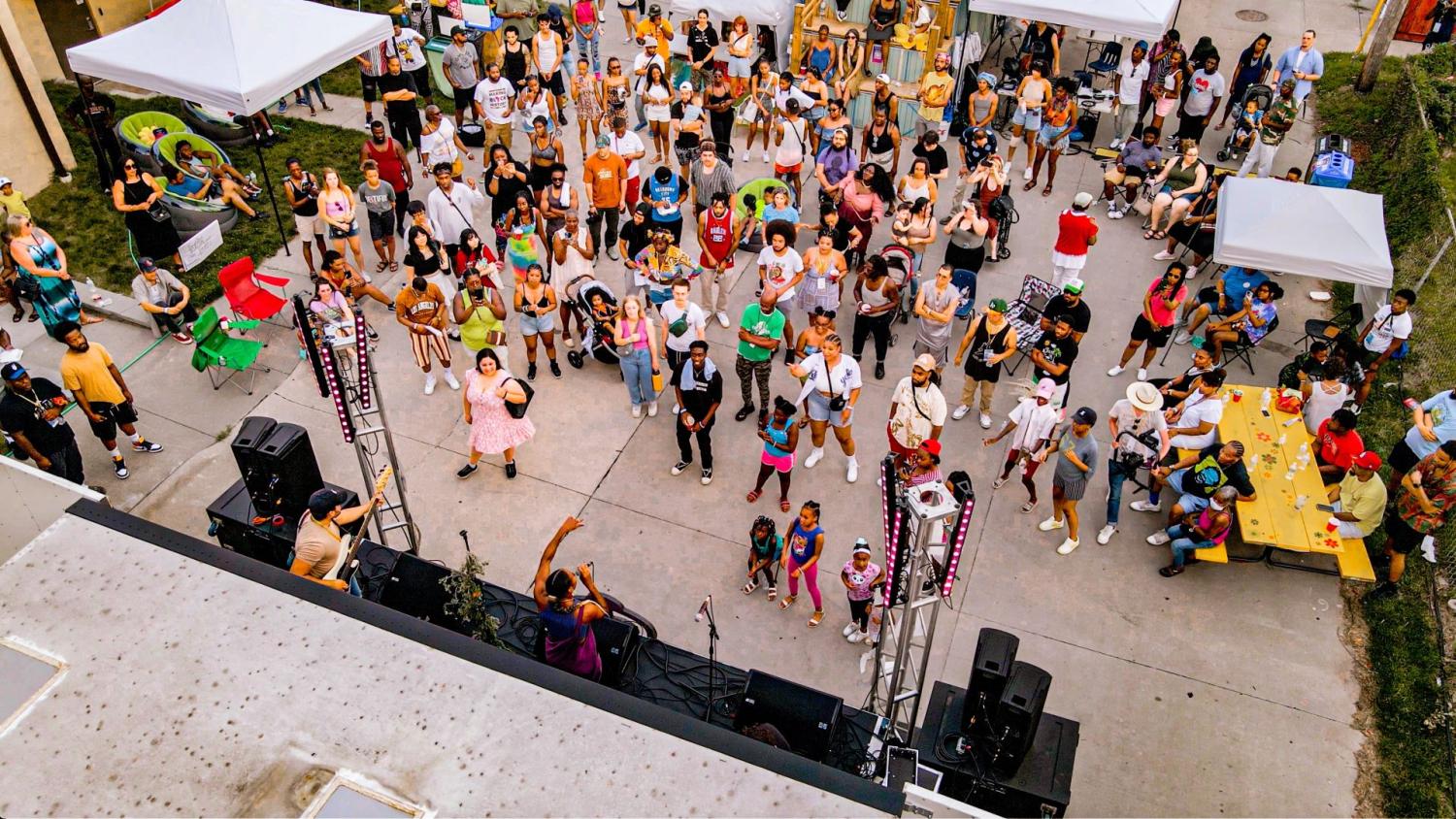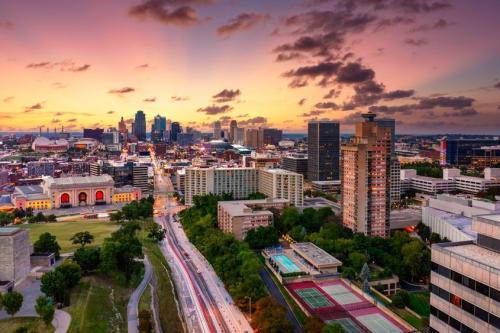Placemaking Postcards is a blog series from the Bass Center for Transformative Placemaking at Brookings where policymakers and practitioners guest-author promising placemaking efforts from across the U.S. and abroad that foster connected, vibrant, and inclusive communities. In line with the principle tenets of placemaking, the goal of the series is to recognize the community as the expert, highlight voices from the field, and to create a community of learning and practice around transformative placemaking.
 Omaha, Neb.’s North 24th Street is the historical and cultural heart of the city’s Black community. It is also one of the many communities that the Omaha Mobile Stage (OMS)—a new mobile placemaking project—has begun to amplify and elevate.
Omaha, Neb.’s North 24th Street is the historical and cultural heart of the city’s Black community. It is also one of the many communities that the Omaha Mobile Stage (OMS)—a new mobile placemaking project—has begun to amplify and elevate.
Created in 2021 as a response to the COVID-19 pandemic’s toll on artists, OMS is an accessible, adaptable, and transportable mobile venue created from a repurposed box truck. In its first year, it has become an important part of the process in supporting the North 24th Street corridor’s diverse arts community, rich athletics legacy, and civil rights history—particularly as the corridor recovers from the pandemic and experiences demographic and economic transitions.
Creating a mobile venue to help artists and neighborhoods recover from the pandemic
Throughout the pandemic, artists and creatives were—and remain—among the most severely affected segment of the nation’s workforce. Aware of this challenge, Partners for Livable Omaha (PLO) launched OMS to be a flexible, safe, and engaging place for communities to socialize with each other, reactivate public spaces, and reanimate the city’s social, creative, and economic life.
OMS has five creative placemaking goals:
- Promote an arts-based response to public health concerns such as social isolation, depression, post-traumatic stress disorder, and other mental health disorders.
- Increase access to the performing arts in low-income and underserved neighborhoods.
- Increase vibrancy and intergenerational social connection.
- Support performing artists and neighborhood businesses.
- Build social capital among designers, performers, and public space advocates.
After conceiving of the idea, PLO launched a multidisciplinary collaborative of Omaha- and Lincoln-based leaders in design, performance, education, and placemaking to make it a reality. Students from FACT (a design/build studio at the University of Nebraska-Lincoln’s College of Architecture) and Nebraska Innovation Studio began working to transform an 18-foot box truck into a mobile stage that could be easily set up for performance events of all types.

To help complete the design/build phase, the project received $60,000 of in-kind contributions from its architecture, engineering, electrical, and university partners. Our team at PLO also raised and contributed nearly $75,000 for the initial purchase and transformation of the truck into a mobile performing arts venue.
Bringing arts to more Omaha communities
After nine months of construction, we were ready to launch, and decided to focus our first performance season on co-producing events in historically disadvantaged communities that were disproportionally impacted by the pandemic. These were also the same communities that, pre-pandemic, had less access to arts education than more affluent neighborhoods.
Our performances have all been free and designed to target both “traditional” and “non-traditional” performing arts audiences (the former being those who may regularly go to galleries, theaters, etc. and the latter being those with less formal exposure to the arts). We also wanted to make sure that families who don’t have a budget for the performing arts could attend and have places to build community with their neighbors.
By hosting performances in public spaces and in close proximity to schools, senior and community centers, and revitalizing Main Streets, we have tried to ensure the arts could be readily accessible to people of color, immigrant populations, older adults, individuals with disabilities, low-income households, and others who may otherwise have limited access to live performances. One example is Pull Up and Vibe, an open mic series and community experience created by Keiria Marsha. It is hosted by Healing Roots African Diaspora Garden—a community garden and placemaking project run by North Omaha residents that is adjacent to the most highly trafficked bus stop on North 24th Street, the developing North Omaha Trail, and several schools and community and senior centers.

Growing economic opportunity through placemaking
The arts can have a substantial economic impact on communities as well as individuals. According to a national study of the economic impact of the nonprofit arts and culture industry, before the pandemic, the industry generated $166 billion of economic activity each year: $63 billion in spending by arts and cultural organizations and an additional $103 billion in event-related expenditures by their audiences.
OMS aims to bring a similar economic lift to Omaha. Its events create opportunities for neighborhood-based businesses, pop-up vendors, and food truck operators, who benefit from event-related spending before, during, and after performances.
For instance, artist Alajia McKizia’s Juneteenth Joy Fest in North Omaha’s historic 24th and Lake district included food by Black businesses, stage design by Black artists, a Black Flea Market, as well as poetry and music performances on OMS.
As Manne Cook, urban development manager at Spark CDI and founder of Omaha’s Fabric Lab and the North Omaha Trail, said, “The Omaha Mobile Stage provides opportunities to reignite the North 24th Street corridor’s historic music and performing arts culture by creating a platform for communities to gather and express themselves.”

In the months and years to come, OMS will continue to serve various neighborhoods in Omaha, along North 24th Street and beyond. In September 2022, for example, OMS began hosting a traveling, citywide youth talent show. In 2023, the series will expand to serve locations throughout the greater Omaha metro area and be paired with workforce development programming.
Our hope is that OMS will continue to harness the power of creative placemaking for community benefit—contributing not only to expanded access to the arts, but also to new forms of social capital, innovation, and civic engagement.









Commentary
How mobile placemaking in Omaha, Nebraska is supporting the city’s Black commercial corridors
October 31, 2022